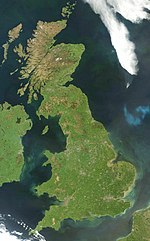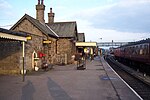Upper Barden Reservoir
Craven DistrictDrinking water reservoirs in EnglandReservoirs in North YorkshireUse British English from January 2021

Upper Barden Reservoir is an upland fresh water reservoir, one of two reservoirs that collect water from Barden Moor, and dam Barden Beck, a tributary of the River Wharfe in the Yorkshire Dales, North Yorkshire, England. The reservoir was opened in 1882 and also supplies fresh water to the Nidd Aqueduct, which transports it to Bradford. Upper Barden Reservoir was the second of the reservoirs to be built, (Lower Barden opened in 1860). The embankment of the dam head is 125 feet (38 m) high, which at the time of its construction, was the highest in England, and notable for being one of the first to use concrete.
Excerpt from the Wikipedia article Upper Barden Reservoir (License: CC BY-SA 3.0, Authors, Images).Upper Barden Reservoir
Geographical coordinates (GPS) Address Nearby Places Show on map
Geographical coordinates (GPS)
| Latitude | Longitude |
|---|---|
| N 54.017 ° | E -1.981 ° |
Address
Cross Gill Head
BD23 6SJ
England, United Kingdom
Open on Google Maps











